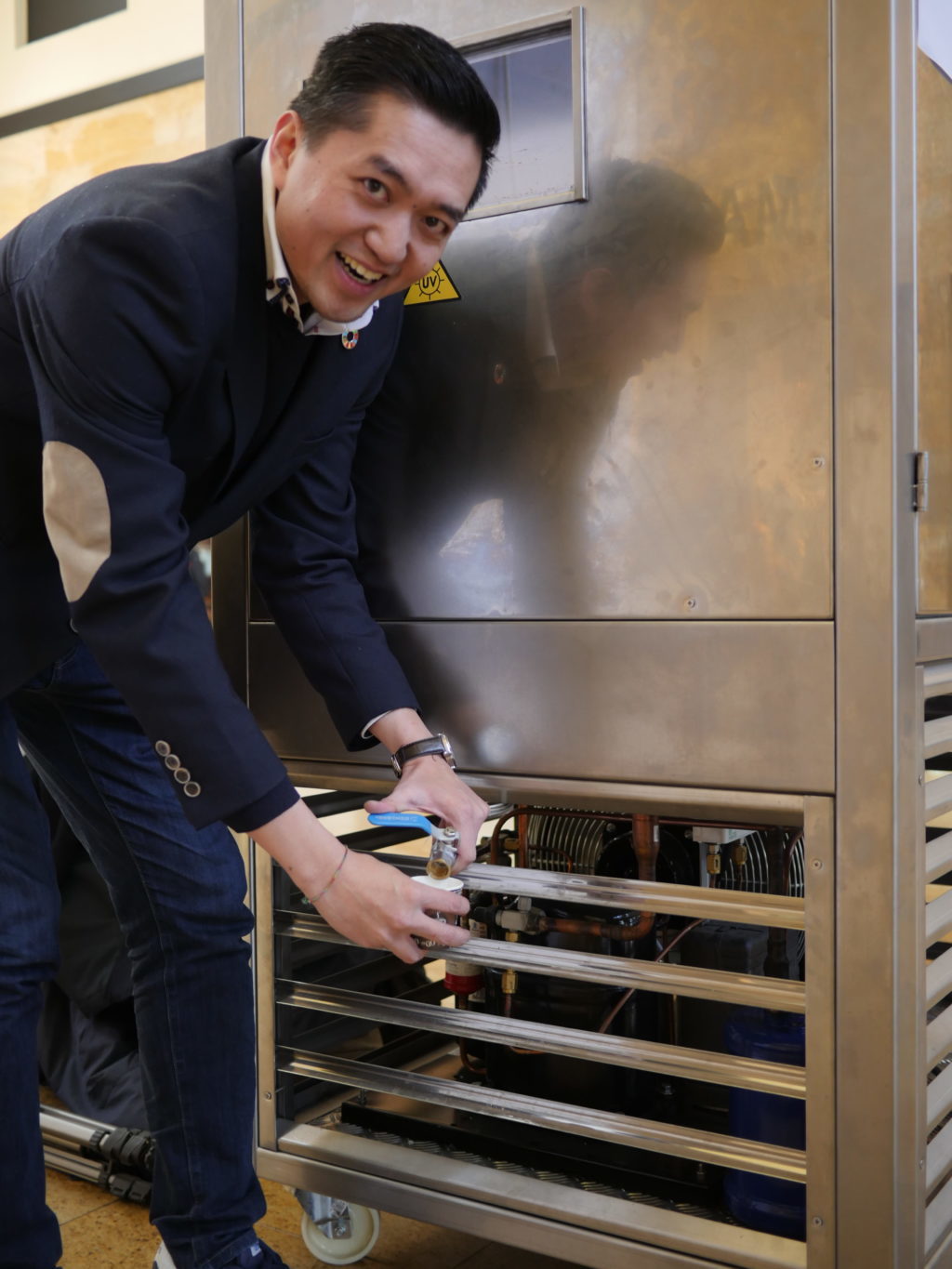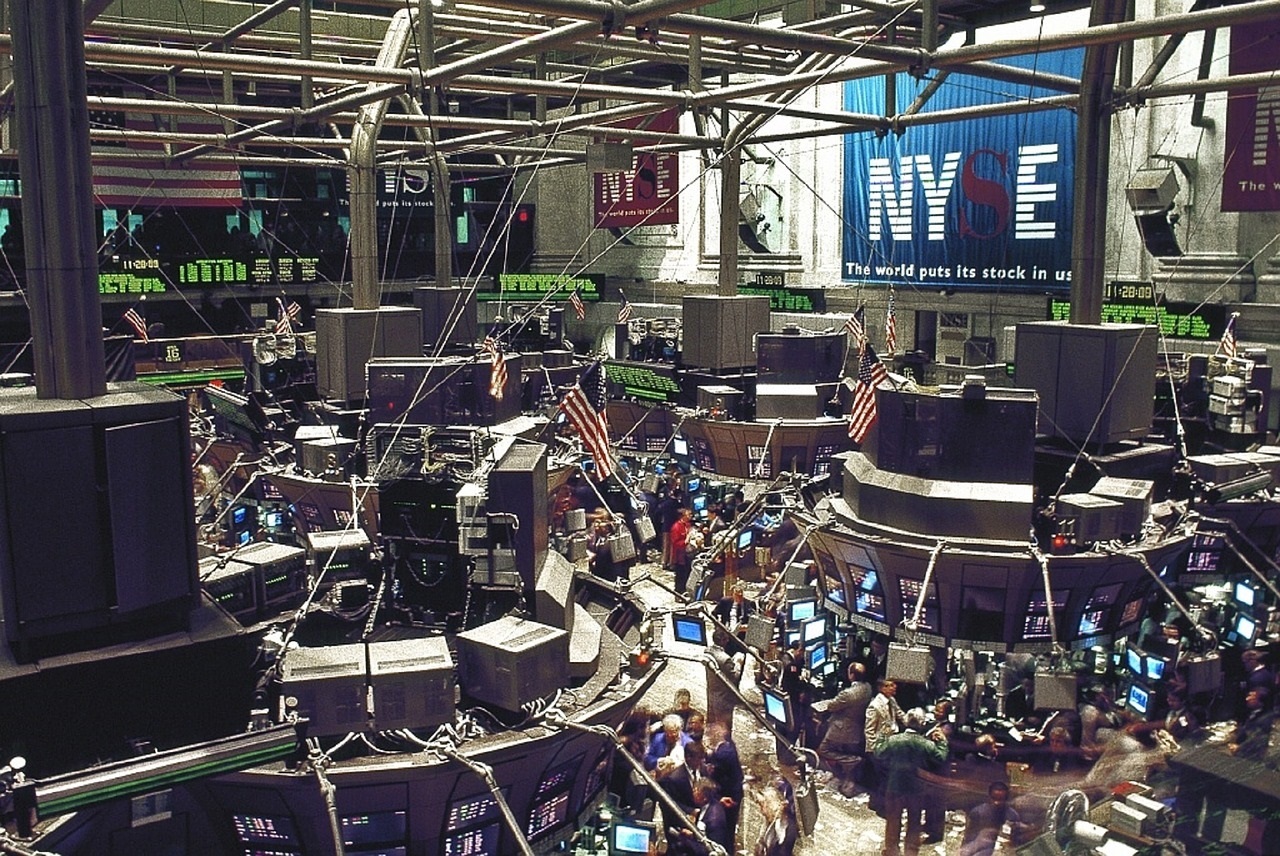As a global population, we are in the middle of a water crisis. However, for those of us living in places with easy access to clean water – as simple as turning on our showers or sinks – it is easy to forget about this fact. Those most affected by a lack of water are refugees in camps around the world as well as those who have recently faced a natural disaster. How can this serious global issue be solved? Thankfully there are people around the world like Nhat Vuong, CEO and Founder of Water Inception who are trying to do just that.
Information on Nhat’s amazing personal story can be seen in the video below. However, we are today speaking with him to learn more about his project: Water Inception, and the incredible idea of using special machines to generate clean water from the air we are breathing. And also to bring those machines in the places where they are needed the most, like refugee camps.
Thanks a lot for speaking with Impakter, Nhat. We know you are in the middle of a crowdfunding campaign. For those who are interested in helping out, can you explain what type of entity Water Inception is, and what it is that you want to achieve through this initiative?
Nhat Vuong: Everything is starting right now as a non-profit. There are still few days left to donate to our crowdfunding campaign. I’m not sure we are going to get what we originally hoped for, but we chose a flexible goal, and this means we will receive the money no matter what. I’m still raising funds, trying to speak to the right people or companies interested in supporting us. This is going to happen until we reach our 50,000 Euro goal. I have no doubt we will reach that, it is just a matter of time.
We are seeking to evolve this into a social business, and everything we will do from that new entity will still have the core mission of doing all we can to provide water to people who don’t have access and cannot afford it. Around it, we are going to find ways to use water generators to generate income that will then be sent to the non-profit. All the profits made from the company will go to the non-profit to buy more water generating machines.
What we are planning to do on the for-profit side is simply sell the machines. Thanks to our introductory video we had a lot of inquiries from India, Pakistan and other countries suffering from the water crisis who were interested to see if they could buy one machine – whether for a village or a neighborhood. People are willing to buy the machine and for each one sold, we have an agreement with the Spanish company that makes them – they will give us a small percentage, and this will eventually go to the non-profit side.
Another way to raise funds, which is the most exciting for me, is that we are trying to see if we could actually bottle the water. I have always believed in micro-donations; it doesn’t quite feel like a donation but rather simple consumption. Every time you consume something, you then donate to someone or something else. It is a similar model to TOMS Shoes. We would like to say: if someone buys one of our bottles, – containing water produced with the same machines here in Switzerland – we can give five liters of water to a refugee camp. We are still calculating the numbers and putting this together, but we are getting the bottles ready to be sold at events, in shops or in supermarkets that care about social impact.
We are also just looking at a company that has produced a bottle that is made from 100% vegetable materials. The idea is to find a way to combine water made from those machines, using 100% renewable energies, and putting it in those 100% biodegradable bottles. Then every time someone buys these bottles, a percentage goes to the non-profit and we will be able to buy more of those machines for those who need them.
Once we can generate water out of thin air in dry conditions, the sky is the limit. We could do a lot of positive things like helping refugees, rural communities, or those affected by natural disasters. We are also considering going into indoor farming or to be on the roofs of self-sufficient buildings where we can generate water for those who live in them. There are many opportunities and we are trying to decide which ones we are going to start with. Despite all these other ideas and initiatives – it should be emphasized that everything we do is really centered on the objective of getting water to those who don’t have access to it.
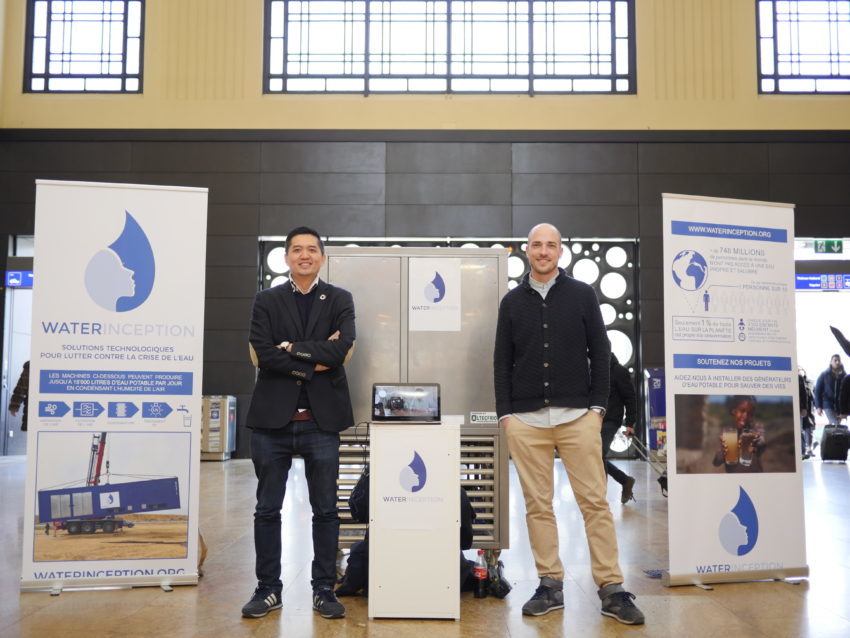
In the Photo: Nhat Vuong presenting Water Inception. Photo Credit: Water Inception
One of the most interesting ideas you mentioned in your presentation is the opportunity for refugees to actually sell the water produced by those machines. Can you tell me more about it?
Nhat Vuong: One of the biggest refugee camps in the world is in Jordan. It hosts more than 80,000 people. To give you a comparison, I live in a small town in Switzerland that has only 20,000 inhabitants. Refugee camps are often like cities and they are starting their own businesses within them. I recently watched a video which featured a guy with a bike painting business, others were selling food – so I thought there could actually be a shop to sell water. Ideally, we would like to provide the machine for free and then an organization could be there to provide water for the people and sell the excess externally from the camp. It is, of course, a very delicate matter and we would first need to find a local non-profit organization that is helping refugees and then try to brainstorm with them as to how this could actually happen.
In Switzerland I started asking what authorization would be necessary to sell water from the machines, and since it is not typical water, we will have to provide extra detailed information about the way in which it is produced. It is quite complicated compared to when you just take water directly from its source. We also recently found a Swiss company that has a strong ability to control the water that is coming out of the machines. The regular machines turn the air into water by condensation but there is no extra filter; it comes as it is. If you want to add minerals or change the taste, you need another machine. The Swiss company has integrated this technology in the machine they are selling and they can produce distilled water, or they can push it as far as having carbonated mineral water. It is pretty amazing and we are talking with them about the business side. For the humanitarian side, we are going to stick with the Spanish machine, because of the lower cost which still enables us to provide clean water.
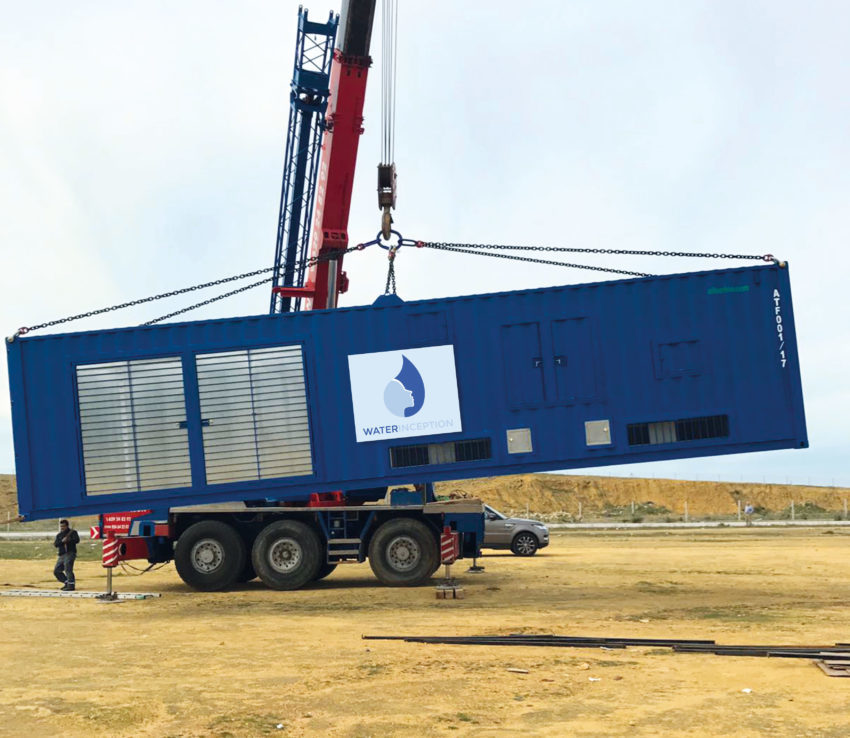
In the Photo: Rendering of the machine being deployed. Photo Credit: Water Inception
You already mentioned two different companies regarding the water generating machines, are you ultimately looking for more technological partners to work with? Are you also planning to connect with International Organizations to achieve your mission?
Nhat Wuong: We are not married to any single idea or company; our aim is ultimately to be like a catalogue of technologies. If you look at our website we also offer other more standard machines like water filters or desalination machines. These are, of course, a better alternative if there is already water at the location in question, and thus a situation in which our atmospheric water generator wouldn’t really make sense.
The advantage of our atmospheric machines is that you put them in the middle of the desert, connect them to solar panels, come back few hours later and there is water. It is clearly more expensive to produce water this way – an estimation is that we amortize the machine in 10 years and the water cost is around 5-10 cents per liter. But it is still cheaper than bottles.
We are always trying to combine the best of our technologies for humanitarian purposes. We don’t have an official partner right now, but we are talking with the Red Cross and the UNCHR, and we are hoping in the future they will utilize our machines. When a new refugee camp is set up, there is really no infrastructure whatsoever so they need to have everything quickly, because people can’t last more than three days without water. They need to come up with something that could produce water from day one. And we can do that.
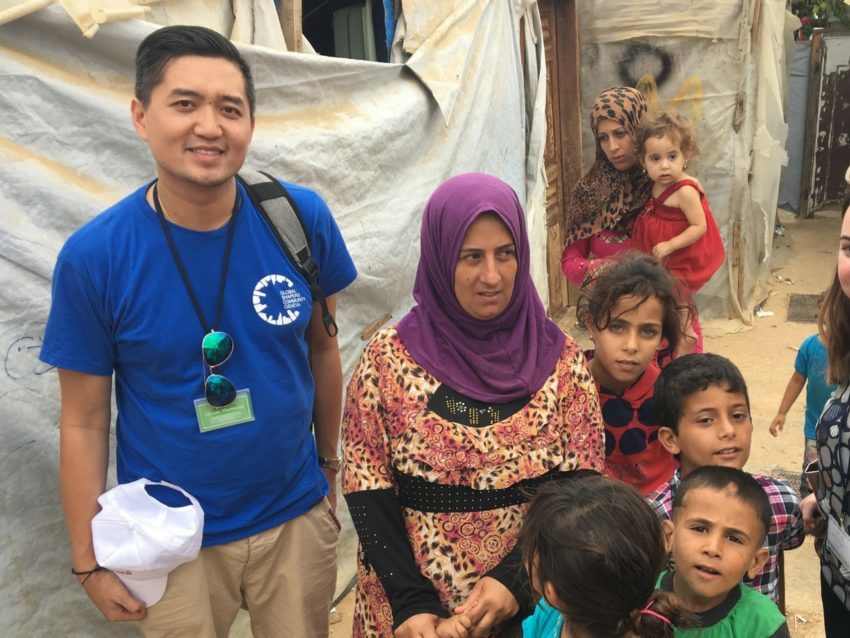
In the Photo: Nhat in a refugee camp. Photo Credit: Water Inception
There is clearly a global water crisis. How do you think we could raise awareness about this?
Nhat Vuong: One of our missions is to raise awareness about the water crisis, and for me producing the bottle I mentioned before is the best way. We will be able to write content on the bottle and include relevant statistics. We want our bottles to be informative and to have a nice design; we are aiming to be the Tesla of bottled water.
People should be attracted by the bottle when they see it, and then they might look and realize they help someone when buying it. I also want people to talk about this. I think people will feel our passion, and when we launch the bottle a lot of them will be more sensitive to this problem. We just need to put our story in front of the right people and everything should progress as we envisage.
Once we have the bottle ready, it is going to be a new era. I’m not happy about the fact that water has been privatized in some parts of the world. I grew up in Switzerland where there is plenty of water and I think we should be like the “Robin Hoods” of water and take it where it is needed. Or at least assist people in getting it.


